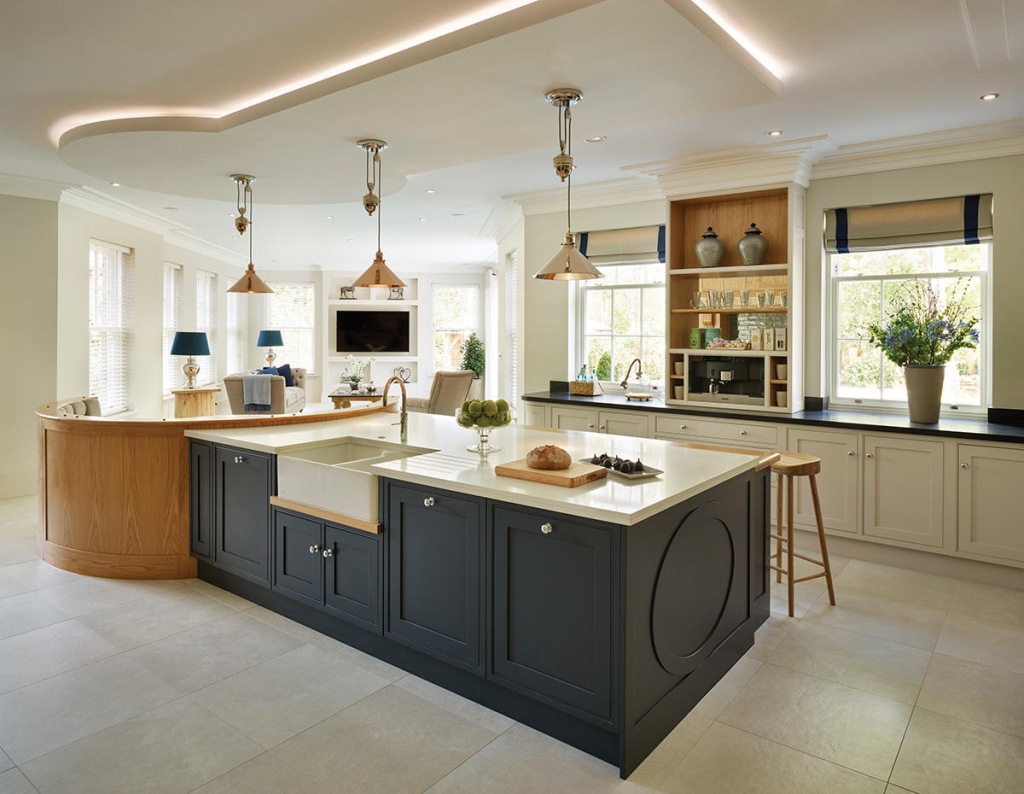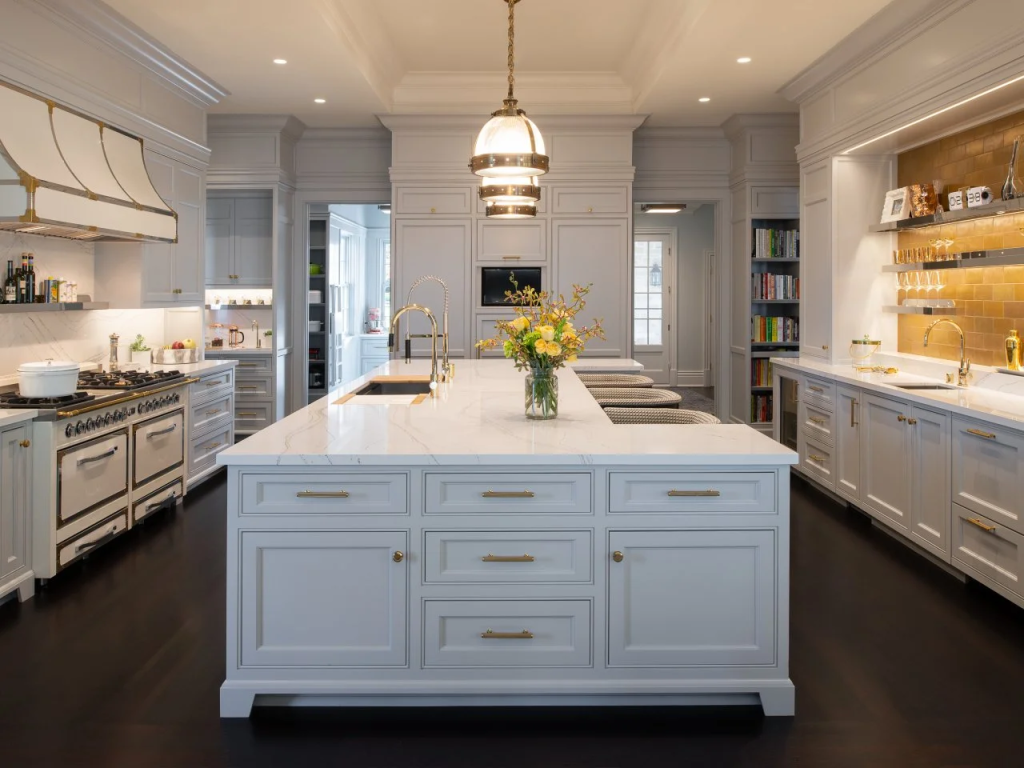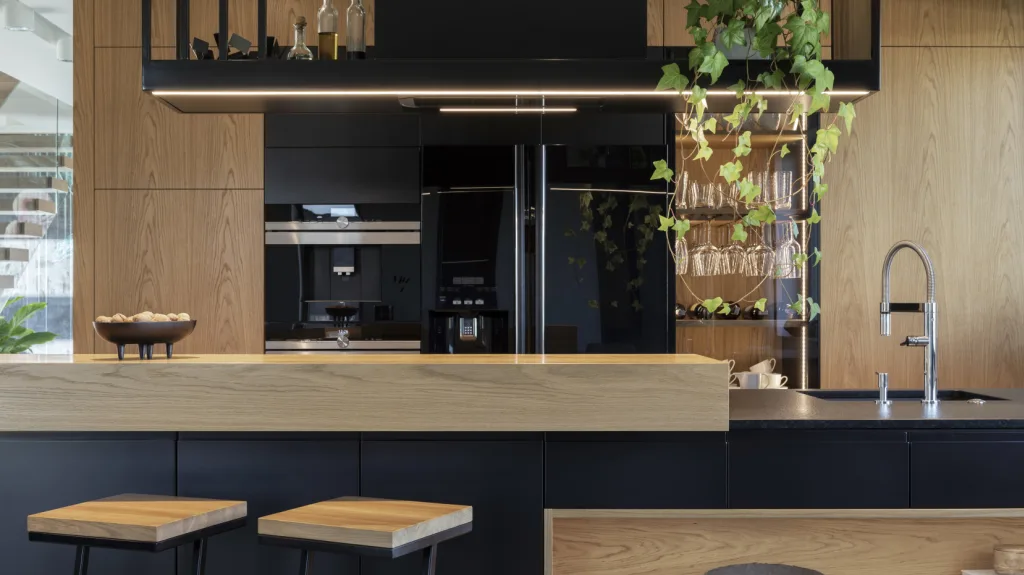A luxury kitchen is more than a place to prepare meals—it is a reflection of lifestyle, taste, and sophistication. The essence of a high-end kitchen lies in balancing functionality with aesthetic appeal, where every detail is thoughtfully designed. From the choice of materials to the integration of smart technologies, luxury kitchens not only enhance daily living but also add lasting value to a property.
Key Elements of a Luxury Kitchen Design
One of the strongest markers of a luxury kitchen is the use of premium materials. Natural stones such as marble, quartz, or granite bring timeless beauty and durability to countertops, while custom cabinetry in lacquered finishes or solid wood provides both elegance and strength. Doors with iron and glass frames introduce an industrial yet refined edge, separating spaces without sacrificing light. These details immediately elevate the atmosphere, transforming the kitchen into a space that feels both refined and inviting.
Appliances also play a pivotal role. In high-end interiors, homeowners often choose professional-grade ranges and ovens or built-in refrigerators and wine coolers. Many of these are fully integrated into the cabinetry, creating a seamless look that merges design with performance. The inclusion of smart appliances, capable of being controlled remotely or responding to voice commands, further sets a luxury kitchen apart from standard ones.
Lighting, too, contributes significantly to the ambiance. A blend of layered lighting creates both practicality and drama—functional task lighting for preparation, warm ambient lighting for comfort, and accent lighting to highlight specific design features. Statement fixtures such as chandeliers or sculptural pendant lamps often serve as focal points, transforming the kitchen into an elegant gathering place.
Layout and Space Planning for a High-End Look

A well-planned layout is essential in creating the impression of grandeur. Open-concept kitchens that merge with dining or living areas bring a sense of flow, making the kitchen the heart of the home. Large kitchen islands often anchor this space, providing not only extra surface area but also a place for family and guests to gather.
Within this open layout, functional zoning is crucial. A luxury kitchen often includes a secondary space, such as a butler’s pantry, which allows for discreet preparation and hosting. This design ensures that the kitchen remains uncluttered and maintains its sophisticated appearance.
Must-Have Luxury Features
The kitchen island deserves special attention, as it frequently becomes the centerpiece of the room. Waterfall countertops in marble or quartz make a striking impression, while built-in wine fridges and storage add practicality. A carefully designed island also doubles as a social hub, offering seating for family meals or evening drinks.
Another distinguishing element is the choice of fixtures and hardware. Designer faucets, deep sinks, and carefully selected finishes such as brushed brass or matte black create a sense of refinement. These subtle details often go unnoticed at first glance but collectively shape the overall impression of the space.
Smart technology is increasingly inseparable from luxury interiors. Automated lighting systems, climate control, and even smart storage solutions bring convenience while maintaining a clean, modern aesthetic. The ability to manage appliances through touch or voice commands highlights the fusion of luxury and innovation.
Personalization and Aesthetic Touches

No two luxury kitchens are identical, and personalization ensures that the design reflects the homeowner’s individuality. Tailored cabinetry and hidden storage solutions provide both practicality and minimalism, allowing the space to remain uncluttered. Drawer organizers and custom shelving further refine everyday use while adding a sense of exclusivity.
Flooring contributes significantly to the feeling of luxury. Natural hardwood lends warmth, while large-format stone or porcelain tiles offer a sleek, contemporary look. Heated flooring systems add comfort, especially in colder climates, enhancing the overall living experience.
Decorative accents tie the design together. Art pieces, elegant bar stools, or the addition of greenery bring personality into the room. These touches soften the atmosphere and prevent the kitchen from feeling too sterile, instead transforming it into a welcoming environment that is both stylish and livable.
Common Mistakes to Avoid in Luxury Kitchen Design
While aiming for a high-end finish, it is easy to make mistakes that undermine the result. Overcrowding the kitchen with unnecessary elements reduces its elegance and functionality. Prioritizing aesthetics without considering workflow can lead to frustration during everyday use. Another common error is choosing lower-quality finishes to cut costs, which diminishes long-term value and can quickly make the space look dated.
Conclusion
A luxury kitchen is the perfect blend of form and function. From premium materials and professional appliances to personalized layouts and smart technologies, every detail plays a part in creating a high-end look. Investing in such a space not only enhances daily living but also adds considerable value to a home. With thoughtful design choices and expert guidance, a kitchen can evolve into a sanctuary of elegance, innovation, and comfort.
